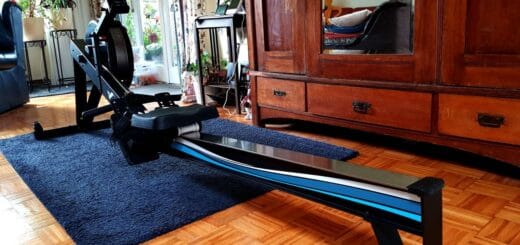
Ever wanted to have your own interactive smart mirror that shows the time, weather, news updates, and more—all while you get ready in the morning? Building a smart mirror is easier than you might think and a great DIY project for tech enthusiasts. In this guide, we’ll take you through the steps to create your own smart mirror from scratch, using affordable materials and some basic programming skills.
What is a Smart Mirror?
A smart mirror is essentially a regular mirror with a digital display behind it that shows useful information like the time, date, weather, calendar, and news headlines. Powered by a small computer (usually a Raspberry Pi), the display is overlaid on the mirror’s surface, creating the illusion that the information is floating on the mirror itself.
Why Build One?
While you can buy ready-made smart mirrors, building your own offers several benefits:
- Customization: You get to choose what information is displayed, from calendars and weather to news feeds or even your own custom widgets.
- Learning Opportunity: It’s a fun way to dive into DIY electronics and programming, especially if you’re into tech projects.
- Affordability: Building your own can be much cheaper than buying a pre-built smart mirror.
What You’ll Need
To get started, here’s a list of the materials and tools you’ll need to build your smart mirror:
Materials:
- Two-way mirror: This is a special type of glass that acts like a mirror on one side but allows light to pass through from the other.
- Monitor: A small LCD screen that will be mounted behind the mirror to display information.
- Raspberry Pi: A tiny, affordable computer that will power your smart mirror and run the software.
- Frame: You can either build your own frame or repurpose an old one that fits the size of your mirror and monitor.
- Wood for backing: For mounting the monitor and securing the mirror.
- HDMI cable: To connect the monitor to the Raspberry Pi.
- Power supply: To keep your Raspberry Pi and monitor running.
- Keyboard and mouse: For the initial setup of the Raspberry Pi.
- Software: The smart mirror will run on software, typically using a platform like MagicMirror² (an open-source smart mirror project).
Tools:
- Screwdriver
- Drill
- Mounting tape or adhesive
- Basic coding knowledge: For configuring the software and setting up widgets.
Step-by-Step Guide to Building a Smart Mirror
Step 1: Prepare the Monitor and Raspberry Pi
Your monitor will be the heart of the smart mirror, providing the display for the information you want to show. Before assembling the mirror, ensure the Raspberry Pi and monitor are connected and running properly.
- Install the Raspberry Pi OS: Start by installing an operating system on your Raspberry Pi. You can use Raspberry Pi OS, which is a free and easy-to-install system.
- Install MagicMirror²: Once your Raspberry Pi is up and running, download and install the MagicMirror² software. This open-source platform is widely used for DIY smart mirror projects and offers tons of customization options.
- Test the Display: Connect the monitor to the Raspberry Pi using the HDMI cable. Once everything is connected, boot up the Pi and check that the display shows the MagicMirror² default interface. You should see the time, weather, and some basic information.
Step 2: Build the Frame and Mount the Mirror
Now that your software and hardware are working, it’s time to build the physical mirror and frame.
- Mount the Monitor: First, mount the LCD screen to a wooden backing that will fit behind the two-way mirror. The screen should be positioned so that it lines up with where you want the digital information to appear on the mirror.
- Attach the Two-Way Mirror: Place the two-way mirror in front of the monitor. Use mounting tape or another strong adhesive to secure the mirror to the frame or backing. Make sure the reflective side faces outward.
- Assemble the Frame: Build or repurpose a frame that fits snugly around your two-way mirror and monitor setup. The frame should hide the monitor’s edges and wiring for a clean, finished look.
Step 3: Customize Your Smart Mirror
Once the hardware is set up, it’s time to customize the software and make the smart mirror truly yours.
- Configure the Display: Use the MagicMirror² platform to choose what information you want displayed. By default, it shows the time, weather, and a calendar. You can add more widgets such as news feeds, to-do lists, or even a Spotify music widget.
- Adjust the Layout: You can modify the layout to fit your preferences. For example, you might want the time and date to appear at the top, while the news headlines scroll across the bottom.
- Install Additional Modules: MagicMirror² has a large community of developers, so there are plenty of additional modules you can install. From fitness trackers to daily motivational quotes, there are endless possibilities to enhance your mirror.
Step 4: Install and Power Up
Once everything is configured and working correctly, you can install your smart mirror in its desired location—perhaps the bathroom, bedroom, or hallway.
- Mount the Mirror: If your mirror is large, it’s best to mount it securely on a wall using proper mounting hardware.
- Power the Raspberry Pi and Monitor: Plug the Raspberry Pi and monitor into a power source. You can hide the cables within the frame for a cleaner look.
- Enjoy Your Smart Mirror: Once the setup is complete, sit back and enjoy your new smart mirror! It will automatically display your selected information every time you pass by.
Customization Ideas
The beauty of DIY smart mirrors lies in their customization. Here are a few ideas to personalize your smart mirror further:
- Voice Control: Integrate voice control using tools like Amazon Alexa or Google Assistant.
- Fitness Tracker: Add a fitness tracker module to show your daily steps or progress toward fitness goals.
- Home Automation: Link your smart mirror to other smart home devices to control lights, thermostat, or security systems.
- Weather Alerts: Customize your mirror to display weather alerts or updates for your specific location.
Conclusion
Building your own smart mirror is not only a fun project, but it’s also a practical way to enhance your daily routine. With just a few tools, some affordable tech components, and a bit of programming knowledge, you can create a personalized, interactive mirror that fits your needs. Whether you’re displaying the latest news or simply checking the weather, your smart mirror will be a unique addition to your home.
So, grab your Raspberry Pi and start building—you’ll be amazed at how easy and satisfying it is to create your own smart mirror!










